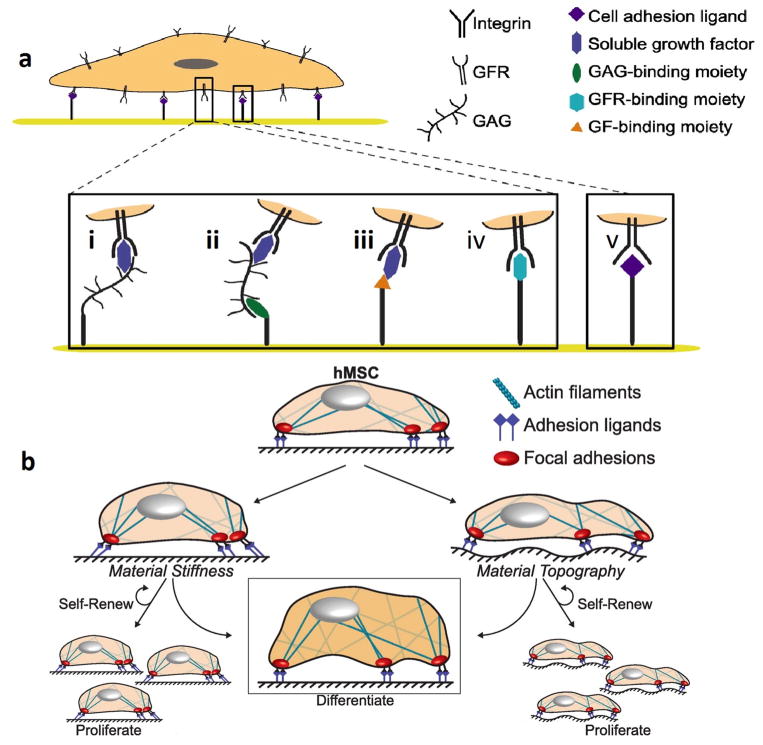Fig. 1.
Stem cell interactions with chemical and physical cues. (a) Chemical interactions on materials can regulate growth factor signaling. Engineered materials may incorporate (i) covalently bound glycosaminoglycans (GAGs) or proteoglycans (PGs) or (ii) moieties that bind GAGs/PGs, which can in turn sequester growth factors from the stem cell microenvironment. Alternatively, materials may be functionalized with (iii) moieties that bind growth factors or (iv) moieties that directly interact with growth factor receptors (GFRs), to upregulate or downregulate GFR signaling. Finally, GFRs and their associated signaling pathways may synergize with (v) integrin-mediated adhesion and signaling downstream of adhesion. (b) Mechanical properties of the microenvironment. Resistance to deformation on stiff materials increases cytoskeletal tension of human mesenchymal stem cells (hMSC) through focal adhesion kinase (FAK) and Rho-associated kinase (ROCK) activity, leading to differentiation. (left) Introduction of topography results in rearrangement of integrins at the cell–material interface, promoting topography-dependent hMSC proliferation, self-renewal, or differentiation. (right) (Figure from Ref. [30] with permission).

